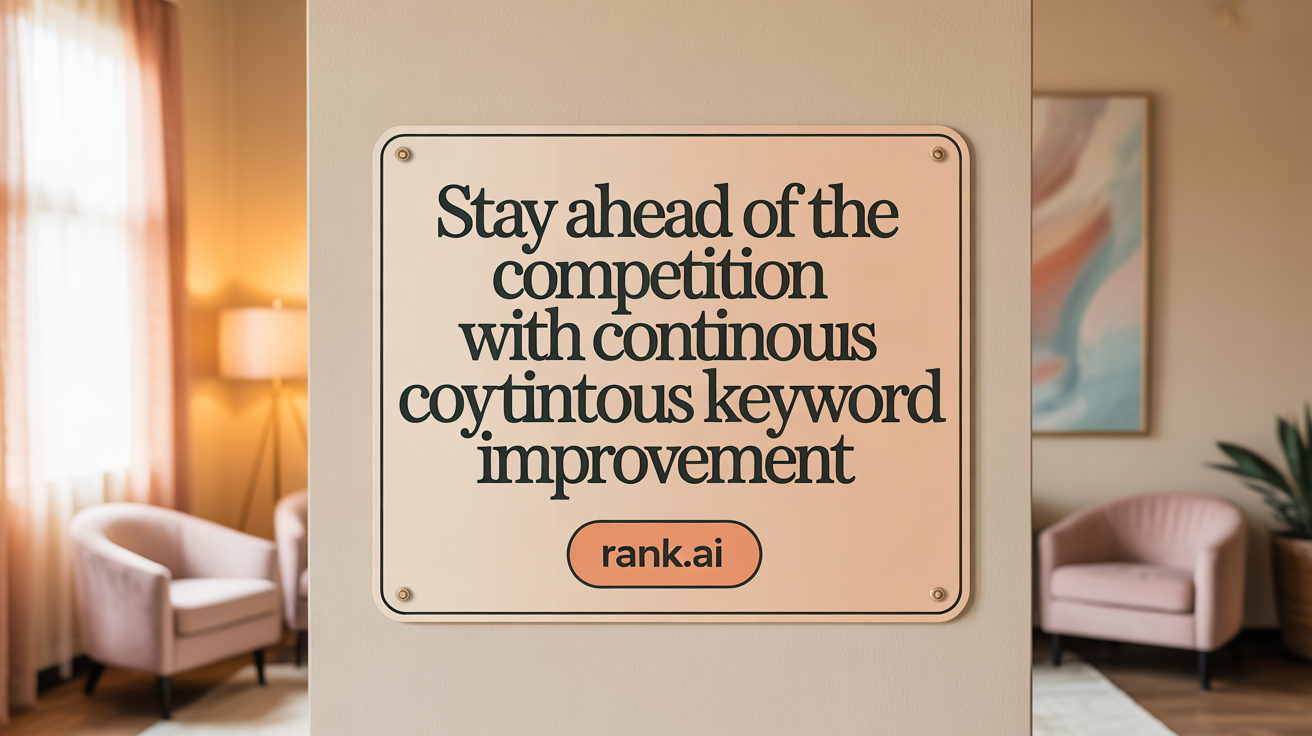Introduction to the Dynamic Nature of Keyword Research
In the ever-evolving landscape of search engine optimization, keyword research stands as a fundamental pillar influencing website visibility, content relevance, and digital marketing success. With Google making thousands of algorithm updates annually—many driven by advances in artificial intelligence like BERT and MUM—maintaining a static keyword strategy is no longer viable. This article explores why keyword research must be an ongoing endeavor, the techniques to implement it effectively, and how it underpins SEO resilience and competitive advantage in a rapidly changing digital environment.
Why Keyword Research Must Be an Ongoing Process
Why does keyword research need to be an ongoing process?
Keyword research is an essential and continuous activity in SEO strategy. This necessity stems from the rapid and constant evolution of search engine algorithms. Google alone makes approximately 4,500 updates every year, many of which are unannounced. These updates often incorporate advanced artificial intelligence technologies, such as BERT, introduced in 2019, and MUM, announced in 2021. These AI-driven changes significantly impact how search engines interpret language nuances, context, and user intent.
As search engines become more sophisticated, the relevance and effectiveness of previously successful keywords can diminish or shift. For example, a keyword that once represented transactional intent might now be interpreted as informational due to algorithm updates. Consequently, static keyword strategies from even a year ago risk becoming outdated or misaligned with current search behaviors.
Beyond algorithm changes, user behavior and search trends are always evolving. New topics, questions, and niches emerge, and searchers increasingly employ diverse and complex queries. Regular keyword research helps marketers identify these trends early, uncover emerging long-tail and niche keywords, and adapt their content accordingly.
Furthermore, shifting search intent across different keywords underscores the importance of ongoing analysis. Monitoring search rankings, impressions, and clicks allows SEO professionals to gauge which keywords are performing well and which need refinement.
By consistently updating their keyword strategies, businesses can enhance website visibility and attract targeted traffic. Maintaining this cycle of research, analysis, and adjustment ensures that content remains aligned with the actual questions and needs of their audience. Overall, ongoing keyword research is vital for staying competitive in an ever-changing search landscape, optimizing content for the most relevant queries, and achieving long-term SEO success.
The Evolution of SEO and the Imperative for Continuous Optimization
Is SEO an ongoing process and why?
Yes, SEO is an ongoing process because the landscape of search engine algorithms is constantly changing. Google, the dominant search engine, updates its algorithms between 500 and 600 times each year, many of which are new and unannounced. This high frequency of updates, many of which incorporate artificial intelligence and natural language processing advancements like BERT and MUM, means that website rankings are always in flux.
To stay ahead, digital marketers and website owners must regularly refine their strategies. This includes updating on-page content, technical SEO elements such as website speed and mobile usability, and building high-quality backlinks. Additionally, monitoring metrics such as organic traffic, search rankings, and user engagement points—like bounce rates and conversions—is vital.
Creating fresh, relevant content is crucial to address changing search intents and user needs. Keyword relevance and search intent are continually evolving, making ongoing keyword research and content optimization a necessity.
Pausing SEO efforts can be detrimental. When businesses stop their optimization activities, competitors continue to improve their sites, which can cause rankings to decline. Over time, this can lead to decreased visibility and lost traffic.
In conclusion, the dynamic nature of search engines necessitates a proactive, continuous approach to SEO. Regular updates, consistent analysis, and staying current with industry trends enable businesses to maintain and grow their organic presence. Neglecting this ongoing process risks falling behind in a highly competitive online environment.
Maintaining Competitive Advantage Through Ongoing Keyword Research

What is the role of ongoing keyword research in maintaining a competitive advantage in digital marketing?
Continuous keyword research plays an essential role in helping businesses stay ahead in the fast-changing landscape of digital marketing. Search engine algorithms, including advanced AI systems like BERT and MUM, are constantly evolving, which means that static keyword strategies quickly become outdated. By regularly analyzing search volumes, user intent, and competitor keywords, companies can uncover new opportunities and refine their content strategies accordingly.
This ongoing process allows marketers to identify high-impact keywords—those with high relevance and search potential—that can significantly boost visibility and attract targeted traffic. Additionally, monitoring competitors' keyword strategies provides insights into market trends and gaps that your business can exploit. Adjusting your keyword focus in real time helps maintain higher rankings, improve content relevance, and deliver a better user experience.
Moreover, ongoing keyword research supports the optimization of paid campaigns such as Google Ads, enabling precise targeting and budget allocation. By continuously evaluating the performance of keywords and incorporating new data, businesses can fine-tune their campaigns for maximum ROI.
In essence, persistent keyword research ensures that digital marketing efforts remain adaptable and effective amid industry shifts. It enables companies to respond quickly to audience behavior changes, new trends, and search engine updates, ultimately strengthening their competitive position in the online space.
How Ongoing Keyword Research Enhances Content Optimization and Market Responsiveness
How does ongoing keyword research support effective content optimization and responsiveness to market changes?
Continuous keyword research is essential for staying aligned with the ever-changing landscape of search engine algorithms and user behavior. As search engines like Google make thousands of updates annually—many unannounced and driven by artificial intelligence and natural language processing—staying current is crucial.
By regularly analyzing search volume, competition, and keyword difficulty, marketers can identify new keyword opportunities and detect gaps in existing content. This proactive approach allows content creators to focus on relevant terms that attract qualified traffic, thereby increasing conversions.
Furthermore, ongoing keyword research helps align content with different stages of the buyer journey, from initial awareness to making a purchase decision. Tailoring content to match search intent—whether informational, navigational, transactional, or commercial— improves user engagement and overall effectiveness.
Adapting strategies promptly in response to algorithm updates or shifts in market trends ensures sustained search engine visibility. Whether it's integrating trending keywords or refining existing content, continuous research supports a data-driven approach that keeps your content relevant and competitive.
In summary, consistent keyword evaluation enables marketers to optimize content effectively, respond swiftly to industry changes, and maintain high visibility in search results. This ongoing process transforms SEO from a static task into a dynamic component of your digital marketing strategy, ultimately leading to improved audience engagement, better rankings, and increased ROI.
Best Practices and Techniques for Effective Ongoing Keyword Research
What are the best practices and techniques for implementing ongoing keyword research?
Staying relevant in SEO requires continuous keyword research that adapts to changing search behaviors and algorithm updates. To do this effectively, it’s essential to use a range of specialized tools. Google Keyword Planner, Semrush, KWFinder, and Ubersuggest are popular choices that help gather fresh data on search volume, keyword difficulty, and emerging opportunities.
Regularly analyzing search trends with Google Trends can reveal seasonal patterns and trending topics, providing your content strategy with timely angles. Monitoring competitors' websites through SEO tools and competitor checkers helps identify niche keywords and unexploited gaps, giving your site a competitive edge.
Additionally, leveraging data from Google Search Console and GA4 allows you to understand how users are searching for your content and where your site might be lacking. This insight guides you to update and optimize your keyword list effectively.
Exploring long-tail and seasonal keywords through forums, social media discussions, and advanced tactics uncovers specific queries that can attract targeted traffic. Furthermore, employing keyword grouping and trend identification techniques streamlines your keyword management, making it easier to identify relevant clusters of terms.
While automation and AI tools can assist with data collection and insights generation, they should complement, not replace, human analysis. Manual review helps validate AI suggestions and ensures the relevance and craft of your content.
Finally, ongoing refinement of your keyword list is crucial. Regularly reassess your keywords based on market shifts, performance metrics, and new trends to keep your content anchored in what your audience is actively searching for. This dynamic approach helps your SEO efforts stay robust and future-proof.
Consistent application of these practices ensures your keyword strategy remains aligned with search engine updates and user intent, ultimately driving higher traffic and engagement.
The Importance of Updating Keyword Research Regularly
 Staying ahead in SEO requires regular updates to your keyword strategy. It is recommended to reevaluate and update your target keywords every 3 to 6 months. This helps keep your content aligned with shifting search trends, emerging competitor tactics, and evolving user behaviors. Google's algorithms, including AI updates like BERT and MUM, change frequently and influence how search queries are interpreted. By monitoring these changes, you can adapt your keywords to match current search intent.
Staying ahead in SEO requires regular updates to your keyword strategy. It is recommended to reevaluate and update your target keywords every 3 to 6 months. This helps keep your content aligned with shifting search trends, emerging competitor tactics, and evolving user behaviors. Google's algorithms, including AI updates like BERT and MUM, change frequently and influence how search queries are interpreted. By monitoring these changes, you can adapt your keywords to match current search intent.
Adjusting your strategies ensures your content remains relevant and competitive. Regular review allows you to identify new high-volume keywords or long-tail variations that your audience is actively searching for. It also helps you recognize declining keywords, so you can shift focus and maintain visibility.
Tracking shifts in user behavior and the continual updates in search algorithms is essential. This ongoing process enables your SEO efforts to be agile, helping your website stay prominent in search results and improving overall search engine visibility.
The Enduring Role of Keyword Research in SEO Success

Is keyword research still important in SEO?
Absolutely. Despite the rapid evolution of search algorithms powered by artificial intelligence, keyword research remains a fundamental component of effective SEO. It helps marketers understand what users are searching for, the language they use, and their specific intentions. This insight allows content creators to tailor their content to match searcher needs accurately.
In 2025, the focus has shifted from mere keyword density to understanding search intent. Search engines like Google now interpret the context and nuances of queries more deeply, thanks to updates like BERT and MUM. These models analyze the purpose behind a search, whether informational, navigational, transactional, or commercial investigation, guiding how content should be crafted.
Ongoing keyword research helps identify relevant topics and keywords that align with real search behaviors. It enables marketers to prioritize high-value keywords with substantial search volume and manageable competition, ensuring better visibility and engagement.
Furthermore, continuously refining keyword strategies allows adaptation to the continual updates in Google's algorithms. Since Google processes approximately 63,000 search queries every second, maintaining an updated understanding of relevant keywords keeps your content competitive.
In conclusion, in a landscape increasingly driven by AI and natural language processing, keyword research remains vital for aligning content with audience needs, improving rankings, and achieving marketing goals. It ensures your SEO efforts are relevant, targeted, and future-proof.
Future Trends in Keyword Research and SEO

What is the future of keyword research as SEO continues to evolve?
The future of keyword research is set to become more audience-focused and intent-driven. As search engines like Google improve their understanding of natural language—thanks to AI updates like BERT and MUM—SEO professionals will need to shift from traditional keyword stuffing to creating content that truly resonates with user needs and search intent.
More advanced tools and data analytics will enable marketers to assess not only search volumes but also deeper insights into searcher motivations and behavior. This shift allows for more precise targeting, where content can be tailored to answer specific questions, guide purchasing decisions, or inform actions.
Ongoing updates in algorithms mean that static keyword strategies from previous years may no longer be effective. Instead, continuous research and adaptation will be necessary. By leveraging AI-driven insights and real-time search trend data, brands can scale their visibility, increase organic traffic, and boost conversions.
So, the future of keyword research lies in harnessing detailed, actionable insights that help create more relevant, high-quality content aligned with current user expectations. This evolution supports a more strategic use of keywords, focusing on relevance and experience rather than mere search volume.
Leveraging insights to scale visibility, traffic, and conversions
Organizations will increasingly use data from various sources—including search analytics, competitor analysis, and social listening—to refine their keyword strategies.
Prioritizing keywords based on intent and relevance ensures that content reaches users at the right stage of their journey, maximizing engagement and conversions.
Tools that integrate keyword data with user behavior metrics will allow marketers to optimize content dynamically, ensuring continuous improvement in rankings and traffic.
Additionally, understanding long-tail, localized, and niche keywords will help businesses target specific audiences more effectively, leading to higher-quality traffic and better conversion rates.
Using actionable keyword data to inform strategic scaling
Effective use of keyword data will involve not just identifying high-volume terms but also evaluating competitiveness and relevance.
Businesses will adopt more sophisticated keyword mapping and clustering techniques to organize content into thematic clusters, enhancing authority and search performance.
By monitoring keyword performance metrics like click-through rates and bounce rates, marketers can make data-driven decisions to refine or pivot strategies.
As search engines increasingly consider context and user experience, integrating keyword insights with on-page SEO, content development, and user engagement strategies will be crucial.
This approach enables scalable growth, helping brands stay ahead in competitive markets and adapt swiftly to evolving search behaviors.
Exploring the future of keyword research reveals a landscape where ongoing learning and strategic agility are essential for sustained SEO success.
Keyword Research as a Pillar of Digital Marketing Strategy
How does ongoing keyword research contribute to content strategy and search visibility?
Keyword research is fundamental to shaping an effective digital marketing approach. As search engines evolve—incorporating AI updates like Google BERT and MUM—keywords remain vital in guiding content development. Regularly updating keyword lists allows marketers to align with current user search intent, adapt to new trends, and optimize for evolving algorithms. This continuous process helps identify high-volume and long-tail keywords, ensuring content remains relevant and discoverable.
Furthermore, keyword research informs on-site SEO practices such as keyword placement, content structure, and topic selection. It acts as a roadmap, helping target audiences find your content more easily. Since search behaviors change frequently, ongoing keyword analysis is necessary to maintain or improve search rankings and maximize visibility.
Challenges and Limitations in Keyword Research and How to Overcome Them
Inaccuracies and variances in keyword research tools
Keyword research tools like Google Keyword Planner, SEMrush, and Ahrefs are invaluable, but they often provide data that can vary significantly. These tools rely on algorithms and estimations, which may not always reflect true search volumes, especially for less common or long-tail keywords. Variations can occur between different tools and even over time within the same tool, making it difficult to trust data at face value.
Understanding keyword data as estimations
It's important to recognize that search volume figures and related metrics are approximations rather than exact counts. Low-volume or niche keywords tend to have less accurate data, which can lead to misguided targeting if not properly interpreted. Relying solely on these numbers without understanding their limitations can hinder effective strategy development.
Supplementing data with PPC testing and analytics
One way to address these inaccuracies is through small-scale PPC campaigns. Running targeted pay-per-click ads enables marketers to directly measure click-through rates, conversions, and actual user interest in specific keywords. Additionally, analytics tools tracking bounce rates, engagement, and conversions on your site can offer real-world data that complements keyword research insights.
Critical role of human judgment in decision-making
Data from digital tools should be viewed as a guide rather than a definitive answer. The insights gained must be interpreted with human experience and marketing expertise. Human judgment helps assess keyword relevance, search intent, and context—factors that automated tools often cannot fully capture.
Ongoing keyword research requires a mix of reliable data, testing, and expert interpretation. By recognizing limitations and combining quantitative data with qualitative insights, digital marketers can craft more effective and adaptable SEO strategies.
Practical Tips for Organizing and Monitoring Keywords for Optimal SEO

Using keyword mapping to prevent cannibalization
Organizing your keywords with a clear mapping strategy is essential to avoid keyword cannibalization, where multiple pages compete for the same search terms. Create a comprehensive keyword map that assigns specific keywords to individual pages or content areas. This helps ensure each page targets a unique set of keywords, reducing confusion for search engines and improving your site’s overall rankings.
Monitoring keyword rankings and adapting strategies
Regularly tracking your keyword rankings is vital in a constantly evolving search landscape. Use tools like Google Search Console or SEMrush to monitor how your keywords perform over time. Pay attention to changes in search positions, impressions, and click-through rates. Use these insights to refine your SEO strategies, focusing on keywords that show growth and reassessing or replacing underperformers.
Incorporating keyword usage best practices
To maximize SEO benefits, naturally incorporate keywords into your content, especially in headers, early paragraphs, and meta descriptions. Avoid keyword stuffing—overloading your content with keywords can harm your rankings. Instead, focus on high-quality, user-focused content that naturally integrates relevant keywords, matching search intent and improving user experience.
Assessing keyword difficulty and prioritization
Understanding keyword difficulty helps you prioritize which keywords to target. Use metrics like keyword difficulty scores to gauge competitiveness, considering factors like domain authority and backlinks. Focus first on less competitive, high-volume keywords for quicker wins, then gradually tackle more challenging keywords as your authority grows.
Investing time in organized keyword mapping and diligent monitoring enables your SEO efforts to stay aligned with industry changes and search engine updates. Continuously refining your keyword strategy ensures your content remains relevant, competitive, and capable of attracting targeted organic traffic.
Conclusion: Sustaining SEO Leadership Through Continuous Keyword Research
Ongoing keyword research is not simply a recommended practice but a critical necessity in the dynamic world of SEO and digital marketing. As search engines evolve through continuous algorithm updates powered by artificial intelligence, the way users search and interact with content transforms rapidly. By consistently investing effort into keyword analysis—employing the best tools, monitoring market and behavioral shifts, and updating strategies every few months—businesses can maintain their competitive edge, optimize content effectively, and enhance user engagement. The future of SEO demands a proactive, audience-focused keyword research approach to unlock lasting growth, visibility, and conversion success across digital platforms.
References
- Why Keyword Research Must Be an Ongoing Process
- Is keyword research still relevant in 2025? - SEO Agentur
- Why You Must Stop Relying On Keyword Research Tools Immediately
- Why is Keyword Research Important? | SEO Fundamentals
- What a decade in SEO taught me about keyword research that works
- Why Keyword Research is (Still) Critical to Your Website's Success
- The Basics of Keyword Research | CALS/LAS Web Team
- How to Do SEO Keyword Research (A Complete Strategy Guide)
- SEO Keyword Research: What It Is and Why It's Important for SEO
- 11 Effective Keyword Research Techniques for Successful SEO



